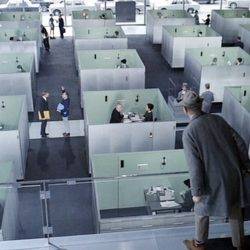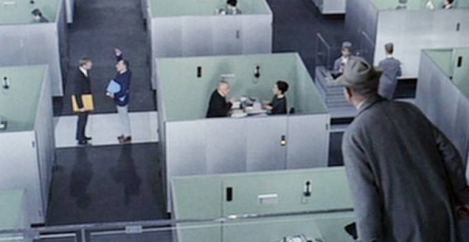January 22, 2018
People who work in an open plan office feel worse and are less satisfied
 The ongoing debate about the impact of open plan offices on people’s wellbeing and productivity continues to divide opinion. While there is a large amount of data from the likes of Leesman Index and workplace expert Nigel Oseland to suggest that an open plan office is the best solution when applied in the right way and right context, a new study from Karlstad University claims the opposite. The more co-workers that share of a workplace, the less satisfied employees are, and the more difficult they think it is to work collaboratively.
The ongoing debate about the impact of open plan offices on people’s wellbeing and productivity continues to divide opinion. While there is a large amount of data from the likes of Leesman Index and workplace expert Nigel Oseland to suggest that an open plan office is the best solution when applied in the right way and right context, a new study from Karlstad University claims the opposite. The more co-workers that share of a workplace, the less satisfied employees are, and the more difficult they think it is to work collaboratively.
In the new study, published in the Scandinavian Journal of Work, Environment & Health, researchers investigated the associations between office type (cellular office, shared-room office, small open-plan office, and medium-sized open-plan office) and employees’ job satisfaction, wellbeing, and ease of interaction with co-workers.
The results suggest a negative correlation between the number of co-workers sharing an office and their job satisfaction. This association was measured according to the ease of interaction with co-workers and a subjective assessment of wellbeing. Employees working in small and medium-sized open-plan offices reported lower levels of both these aspects than employees who work either alone in cellular offices or together with up to two colleagues in shared offices.
The researchers conclude that open-plan offices may have short-term financial benefits, but these benefits may be substantially lower than the costs associated with decreased job satisfaction and wellbeing. Therefore, decision-makers should consider the impact of a given office type on employees rather than focusing solely on cost-effective office layout, flexibility, and productivity.
They study was recently published in Scandinavian Journal of Work, Environment & Health; Otterbring, T., Pareigis, J., Wästlund, E, Makrygiannis, A., & Lindström, A. ”The relationship between office type and job satisfaction: Testing a multiple mediation model though ease of interaction and well-being”.
Image: a still from the Jacques Tati classic movie Playtime.














